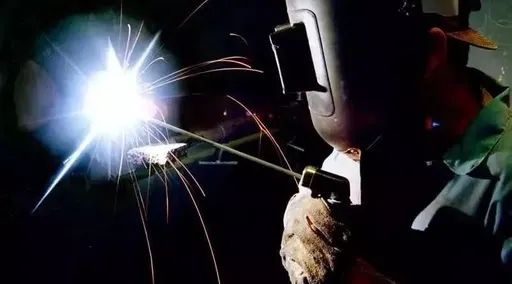Non-destructive testing is the use of acoustic, optical, magnetic and electrical properties, without harming or affecting the use of the object under the premise of the performance of the object to be inspected, to detect the existence of defects or inhomogeneities in the object to be inspected, to give the size of the defects, the location of the defects, the nature of the number of information and so on, and then determine the technical state of the object to be inspected (e.g., qualified or unqualified, residual life and so on) all the technical means of the general term.
Commonly used non-destructive testing methods: Ultrasonic Testing (UT), Magnetic Particle Testing (MT), Liquid Penetration Testing (PT) and X-ray Testing (RT).

Ultrasonic Testing
UT (Ultrasonic Testing) is one of the non-destructive testing methods in industry. Ultrasonic waves into the object encountered defects, part of the sound wave will be reflected, the transmitter and receiver can analyze the reflected wave, it can be exceptionally accurate measurement of defects. And can show the location and size of internal defects, determine the thickness of the material.
Ultrasonic testing advantages:
1, the penetration ability is large, for example, in the steel in the effective detection depth of up to 1 meter or more;.
2, for plane-type defects such as cracks, interlayers, etc., the detection of high sensitivity, and can determine the depth and relative size of defects;
3, lightweight equipment, safe operation, easy to realize automated inspection.
Disadvantages:
Not easy to check the complex shape of the workpiece, requires a certain degree of smoothness of the inspected surface, and the coupling agent is required to fill the gap between the probe and the inspected surface to ensure adequate acoustic coupling.
Magnetic Particle Inspection
First of all, let’s understand the principle of magnetic particle inspection. After the magnetization of ferromagnetic materials and workpieces, due to the existence of discontinuities, the magnetic lines of force on the surface of the workpiece and near the surface of the local distortion, and generate a leakage field, adsorption of magnetic powder applied to the surface of the workpiece, forming a visually visible magnetic trace in the appropriate light, thus showing the location, shape and size of the discontinuity.
The applicability and limitations of magnetic particle inspection are:
1, magnetic particle flaw detection is suitable for detecting discontinuities on the surface of ferromagnetic materials and near the surface with very small size and very narrow gaps that are difficult to see visually.
2, magnetic particle inspection can be a variety of cases of parts detection, but also a variety of types of parts to be detected.
3, can find cracks, inclusions, hairline, white spots, folding, cold segregation and loose and other defects.
4, magnetic particle inspection can not detect austenitic stainless steel materials and welds welded with austenitic stainless steel welding electrodes, and can not detect copper, aluminum, magnesium, titanium and other non-magnetic materials. For the surface of shallow scratches, buried deeper holes and with the workpiece surface angle less than 20 ° delamination and folding is difficult to find.
Liquid penetration detection
The basic principle of liquid penetration detection, the surface of the part is coated with fluorescent dyes or coloring dyes, in a period of time under the action of the capillary, the penetrating liquid can penetrate into the surface opening defects; after removing the excess penetrating liquid on the surface of the part, and then coated with a developer on the surface of the part.
Similarly, under the action of the capillary, the developer will attract defects in the retention of the permeate, permeate back to the developer, in a certain light source (ultraviolet light or white light), the defects at the permeate traces are displayed, (yellow-green fluorescent or bright red), so as to detect the defects of the morphology and distribution of the state.
The advantages of penetration detection are:
1, can detect a variety of materials;
2, has a high sensitivity;
3, the display is intuitive, easy to operate, low detection costs.
And the disadvantages of penetration testing are:
1, not suitable for inspection of porous loose material made of workpieces and rough surface workpieces;
2, penetration testing can only detect the surface distribution of defects, it is difficult to determine the actual depth of defects, and therefore it is difficult to make a quantitative evaluation of defects. Detection results are also affected by the operator.
Xinfa welding equipment has the characteristics of high quality and low price. For details, please visit:Welding & Cutting Manufacturers – China Welding & Cutting Factory & Suppliers (xinfatools.com)
X-ray Inspection
The last, ray detection, because X-rays through the irradiated object will have loss, different thicknesses of different substances on their absorption rate is different, and the negative is placed on the other side of the irradiated object, because the intensity of the rays are different and produce the corresponding graphic, film evaluators can be based on the image to determine whether there are defects within the object as well as the nature of the defects.
The applicability and limitations of ray detection:
1, more sensitive to detect volumetric defects, easier to characterize the defects.
2, the ray negative is easy to retain, there is traceability.
3, visualization of the shape and type of defects.
4, the disadvantages can not locate the buried depth of defects, while the detection of limited thickness, the negative needs to be sent specifically to wash, and the human body has a certain harm, the cost is higher.
In short, ultrasonic, X-ray flaw detection is suitable for detecting internal defects; where ultrasonic for more than 5mm, and the shape of the regular parts, X-ray can not locate the buried depth of defects, radiation. Magnetic particle and penetration flaw detection is suitable for detecting defects on the surface of parts; among them, magnetic particle flaw detection is limited to detecting magnetic materials, and penetration flaw detection is limited to detecting open defects on the surface.
Post time: Aug-24-2023



